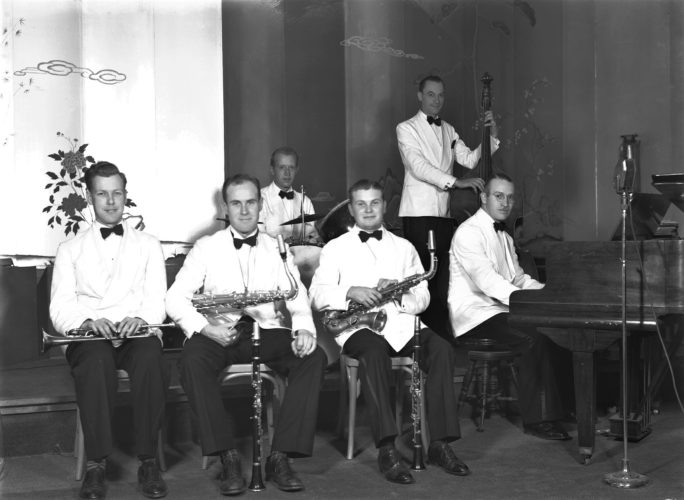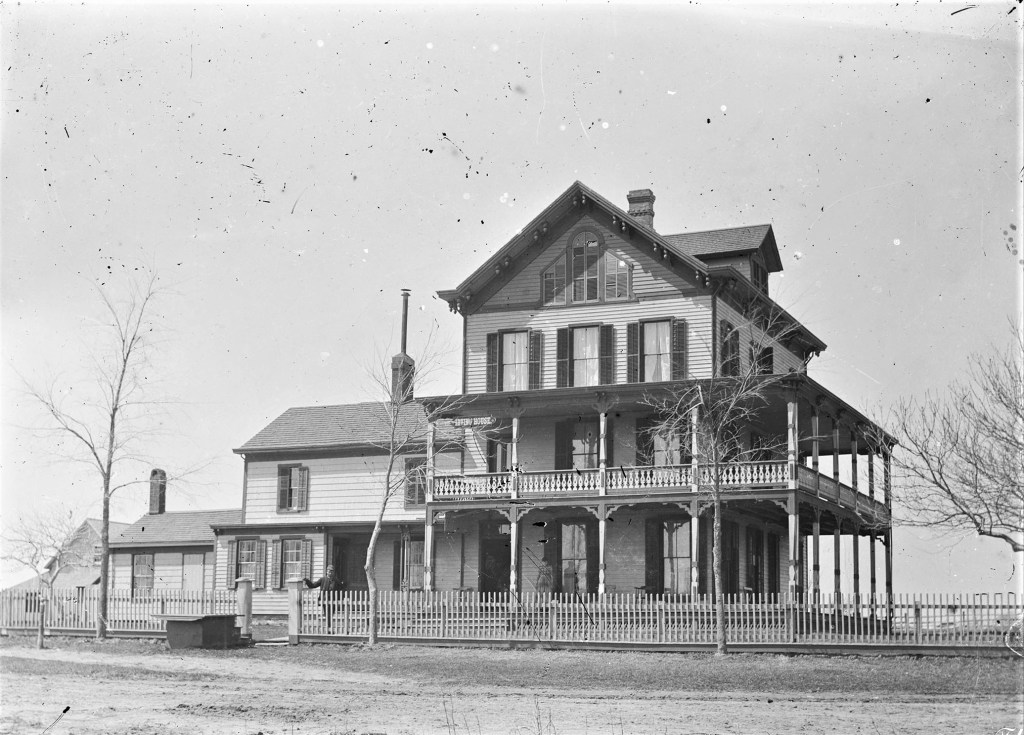Starting Saturday, March 2, the Rogers Mansion will display an entirely new set of historic photos from the Morris Studio Collection. George W. Morris began taking professional photos in 1892 when he opened his photography studio on Main Street in Southampton. When the shop closed in 2017, over 10,000 glass plate negatives were discovered hidden in the basement. This exhibit includes more than 70 framed photographs taken at the studio spanning over 100 years. Among the photographs are local historic landmarks and family portraits. The public is invited to the opening reception for this new installation on Saturday, March 2, 4-6 PM, at the Rogers Mansion.
The Morris Studio, which operated in the same familiar building on the east side of Main Street from 1898 until 2017, actually opened six years earlier in 1892 when photographer George W. Morris (1871-1959)set up shop above Madame Juliette’s Millinery Shop on the other side of the street. Morris came to Southampton at the age of 21 from Sayville where he had apprenticed in photography. An up-and-coming resort for the affluent, Southampton seemed like a good bet for an up-and-coming photographer. Morris was a master of his craft in an era when images were still being captured on glass plates by a very complex process. Because it was essential that the plates be kept moist, Morris would float them in a sticky essence of coffee.

The highly styled costumes of these two ladies reveal their attendance at an afternoon reception. Strings of pearls and ostrich feathers, seen in the fan on the left and on the hat on the right, were popular during the Belle Epoque at the end of the Victorian era.
For studio portraits, Morris liked to use the natural light from a large skylight, which came crashing to the floor in the 1938 hurricane. Out in the field with his primitive camera, Morris captured priceless views of Southampton’s dirt roads, vintage automobiles, landmarks and long-gone citizens engaged in forgotten pursuits. Back in his darkroom, he mixed his own chemicals to produce the images that are our best record of Southampton at the turn of the last century.

This unidentified photo may be a promotion for a Southampton boarding house. The couple stand on the lawn with their dog and pony. The windows are open and do not have insect screens, which are not needed near the ocean. On the right a pillow on the front porch steps suggests leisure time and on the left a quilt drying in the sun advertises cleanliness.
Following in their father’s footsteps, sons Wilton and Douglas Morris later took over the business and proved nimble negotiators of the rapid advances in photography. When Douglas Morris retired, the business continued under the ownership of Jim Thomason, but his efforts and those of his son who followed him were gradually overwhelmed by the realities of the digital age. The Morris Studio building survives at 72 Main Street as the Henry Lehr retail store; the collection of photographs is now owned by Jim Thomason’s son Neal Thomason.




















